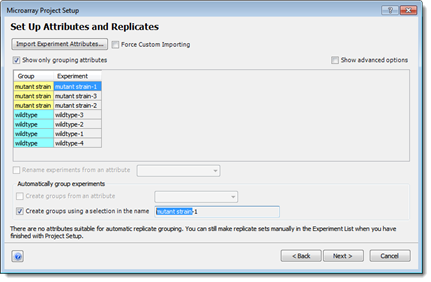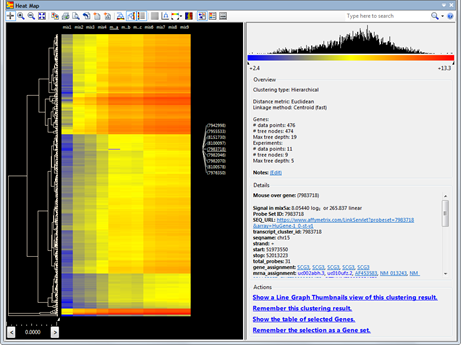

Gene expression characterization information is important in gaining a better understanding of how multiple genes react in different conditions or over time. This ultimately can provide better insights into the controlling functionality of different genes in certain situations.
To set up a microarray project:
1) Launch ArrayStar. From the Welcome screen, choose Microarray gene expression and analysis.
2) In the Add Experiments to Import screen, import your microarray data from a variety of supported file formats.
3) In the Set Up Preprocessing for Microarray Data screen, choose the normalization method: RMA, PLIER, quantile normalization, and average summarization.
4) Use the Set Up Attributes and Replicates screen to set up replicate sets. This can also be done later on using the Experiment List view. Subsequent analysis can be done using either the data averaged across replicates or using individual experiments.

5) The Import Annotations screen lets you import available annotations for your data. This step of the wizard varies depending on the type of data files that have been loaded. For details, see Importing Annotations for Affymetrix Data / NimbleGen Data / All Other Microarray Data Types. When importing annotations, ArrayStar only loads those which are associated with genes in the project.
Related VIDEO: Importing microarray data and creating replicate sets
To analyze microarray data:
Once the project has been created, you can:
•Analyze your data using annotations, statistical analysis, and multiple clustering algorithms. For a description of statistical tests that can be applied to microarray data, see Study gene expression and regulation.

•Use advanced filtering capabilities to quickly examine and re-examine data based on different experimental assumptions
•Organize, manage, and print your gene sets of interest from the Set List view
Related VIDEO: Analyzing gene expression patterns
Microarray tutorials with included data:
•Short microarray tutorial with E. coli samples